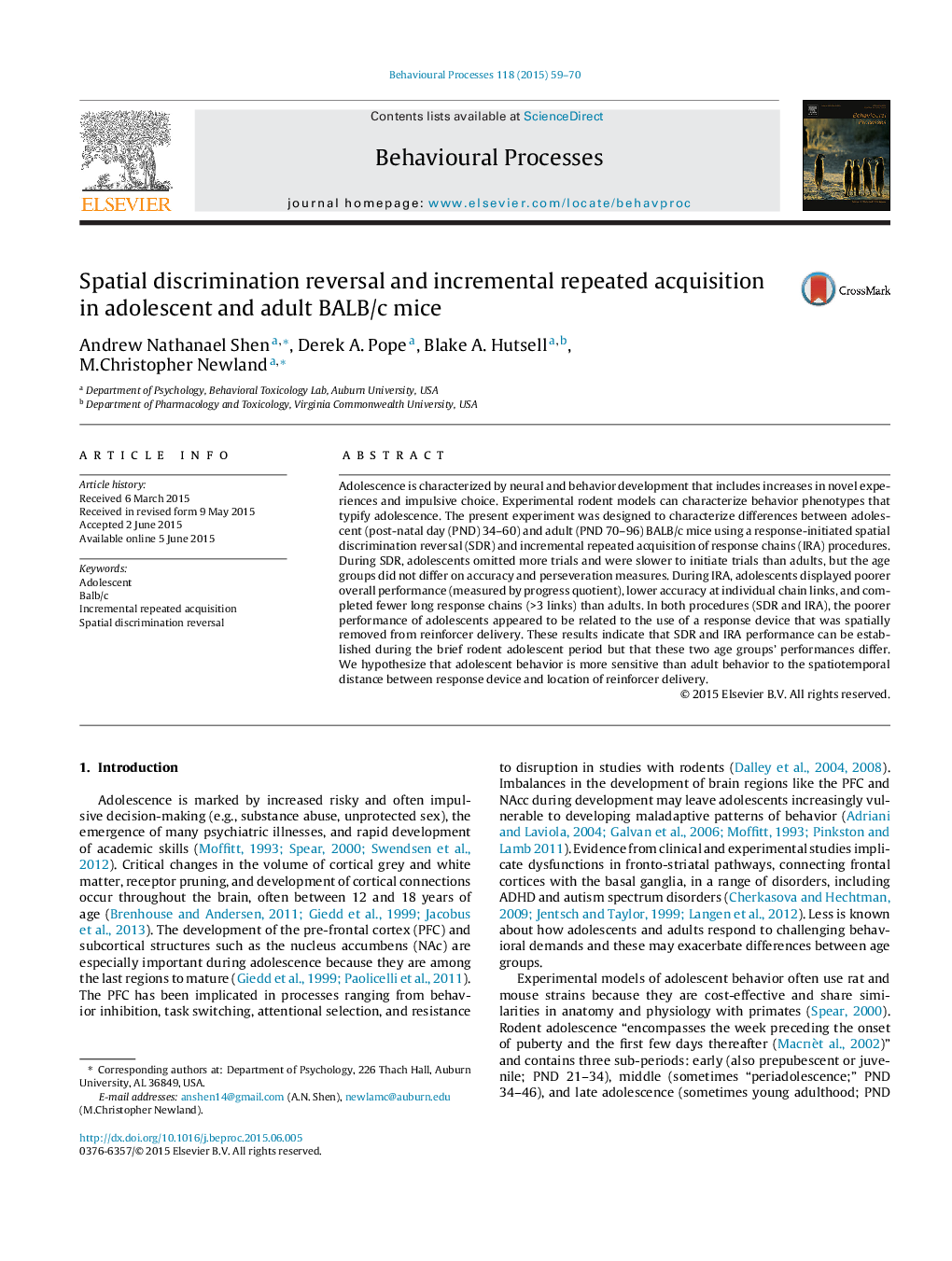| Article ID | Journal | Published Year | Pages | File Type |
|---|---|---|---|---|
| 2426570 | Behavioural Processes | 2015 | 12 Pages |
•Adolescent and adult BALB/c responded under spatial discrimination reversal (SDR) and incremental repeated acquisition (IRA) procedures.•Adolescent mice omitted more trials than adults during SDR, but there was no effect of age on accuracy.•Adolescent mice were less productive (i.e., lower progress quotient) than adults during IRA.•Adolescents appeared to engage in more off-task behavior than adults on both tasks.•These procedures increase the tools available for studying operant behavior during rodent adolescence.
Adolescence is characterized by neural and behavior development that includes increases in novel experiences and impulsive choice. Experimental rodent models can characterize behavior phenotypes that typify adolescence. The present experiment was designed to characterize differences between adolescent (post-natal day (PND) 34–60) and adult (PND 70–96) BALB/c mice using a response-initiated spatial discrimination reversal (SDR) and incremental repeated acquisition of response chains (IRA) procedures. During SDR, adolescents omitted more trials and were slower to initiate trials than adults, but the age groups did not differ on accuracy and perseveration measures. During IRA, adolescents displayed poorer overall performance (measured by progress quotient), lower accuracy at individual chain links, and completed fewer long response chains (>3 links) than adults. In both procedures (SDR and IRA), the poorer performance of adolescents appeared to be related to the use of a response device that was spatially removed from reinforcer delivery. These results indicate that SDR and IRA performance can be established during the brief rodent adolescent period but that these two age groups’ performances differ. We hypothesize that adolescent behavior is more sensitive than adult behavior to the spatiotemporal distance between response device and location of reinforcer delivery.
